


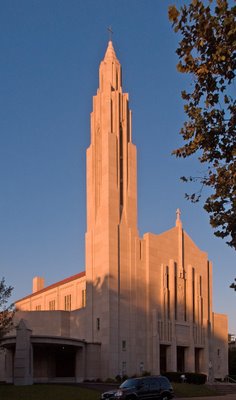
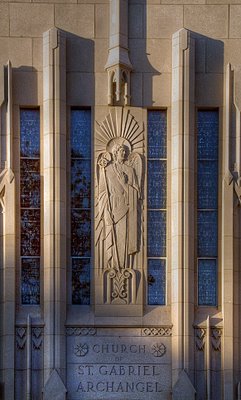
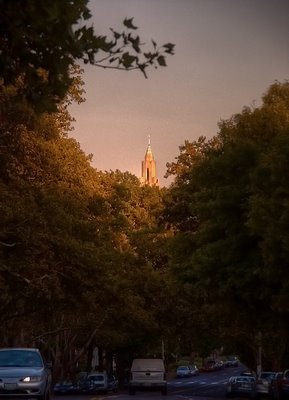
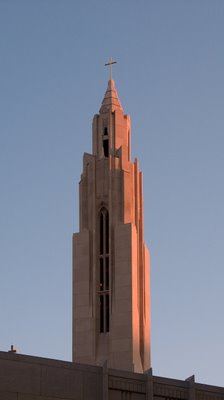
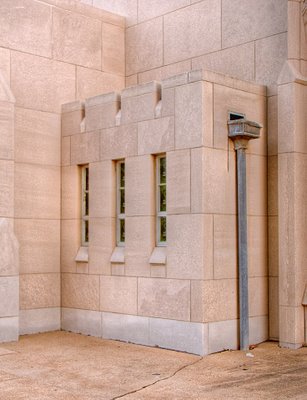

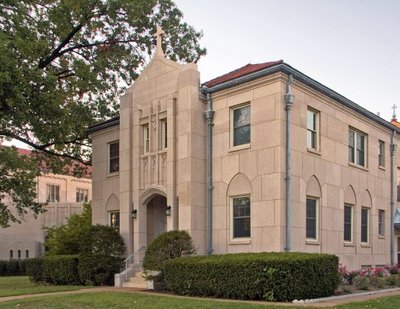
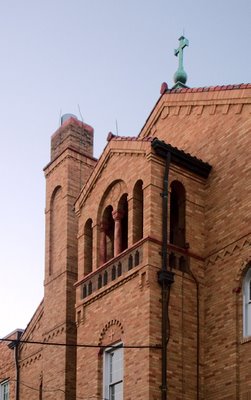



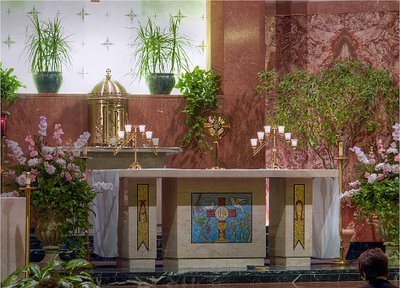

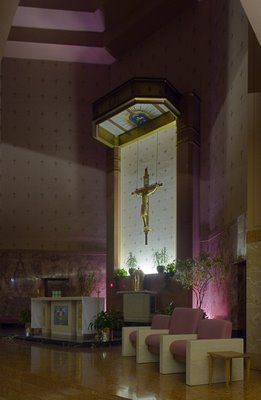
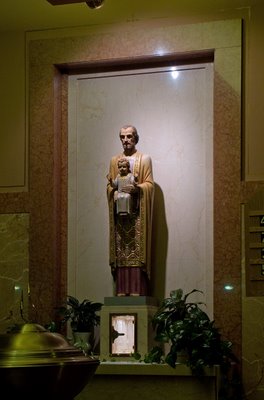

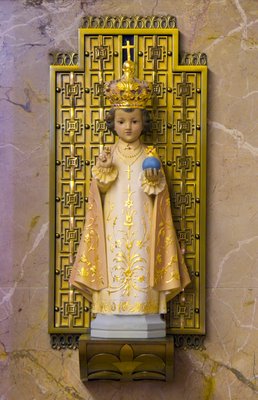

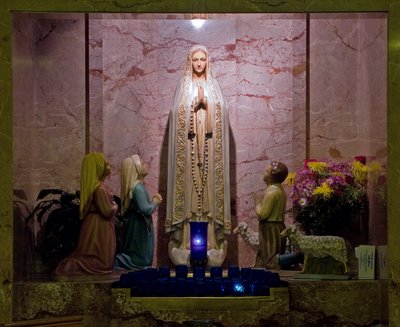


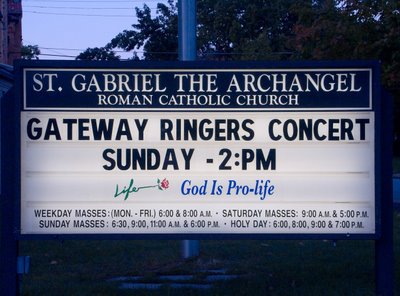
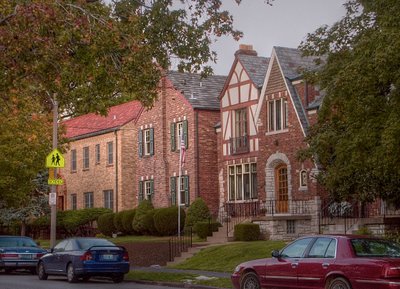
Is there any beauty, or romance, or stuff for poetry, in our Missouri place names? The author of the first volume of poetry ever published west of the Mississippi River did not think so. Said Angus Umphraville, in a special footnote to his poem "The Queen of the Rivers," published at St. Louis in 1821:— Our Storehouse of Missouri Place NamesThe task of describing the course of the Missouri is rendered peculiarly disagreeable by the mean, low, absurd, inharmonious, and unappropriate names which white traders and discoverers have conferred upon its most romantic beauties... What poet would not be deterred by such barbarous names from celebrating "The Beauty of the Cannonball," or "The Maid of Boone's Lick," or "The Hero of the Conewango?"Later lovers of poetry modified this harsh judgment far enough to find some romance and beauty in our foreign names, French, Spanish, and especially Indian—such names as Gasconade and Crève Coeur, Molino and Potosi, Onondoga and Niangua; and they began to plead wistfully for more of them to replace the raw, crude, hopelessly American names that prosaic Anglo-Saxon pioneers persisted in scattering over the landscape.
But time takes curious revenges. Nowadays poets have learned to find beauty in unlikely places. Some of the foreign place names so much admired a generation ago are still pleasant enough, but others among them retain only a sort of pinchbeck beauty. As Stephen Vincent Benet has taught us:Seine and Piave are silver spoons;Anybody can find poetry in springtime and sunsets. But it takes a real poet like Robert Frost to find poetry in building a wall, and a real painter like our own Thomas Hart Benton to make pictures out of barbecues and baptizings, Huck Finn and Jesse James, and Frankie and Johnnie. After all, sweat is a far more poetical word than perspiration.
But the spoon-bowl metal is thin and worn.
So we may quote a few additional lines from Benet's classic, "American Names," which has so fascinated our Missouri place-name workers that most of them have placed it on the opening pages of their eighteen theses:I have fallen in love with American names:Witness also the testimony of Mr. Dennis Murphy, one of the most genuine of recent Missouri poets, in his little volume of 1941 entitled The Doomed Race:
The sharp, gaunt names that never get fat;
The snakeskin-titles of mining-claims;
The plumed war-bonnet of Medicine Hat,
Tuscon and Deadwood and Lost Mule Flat....
I will remember Carquinez Straits,
Little French Lick and Lundy's Lane,
The Yankee ships and the Yankee dates,
And the bullet-towns of Calamity Jane.
I will remember Skunktown Plain....
I shall not reset quiet in Montparnasse.
I shall not lie easy at Winchelsea.
You may bury my body in Sussex grass;
You may bury my tongue at Champmedy.
I shall not be there. I shall rise and pass.
Bury my heart at Wounded Knee.Willow Springs, Lebanon,Amother of the younger Missouri poets, Mr. Ralph Alan McCanse, has demonstrated effectively in his two volumes, The Road to Hollister: a Hill-Country Pastoral, of 1931, and his latest volume published only last year, Waters over Linn Creek Town, that many a place name is a compressed poem in itself. His earlier volume captures the spirit of Taney County as carried in its names:
Mountain view, Cedar Ridge—
Crooked creek and highway run
Side by side to the bridge.
Asters by an old board walk;
Blacksmith's shop; grocery store
Where men-folks tipple, women talk,
And lazy hounds loll at the door....
Evening Shade, Buffalo,
Rocky Comfort, and Birch Tree—
It matters little where I go;
Ozark towns keep haunting me.A sabbath airIn his Waters Over Linn Creek Town, he has interpreted even more appealingly the "spirit of place" and the very human people of
Through all the hills prevailed. Across the Ridge
Came scarce a breath of wind, that morning hour;
and drowsy peace possessed the countryside...
But in the country stores—at Garber Bald,
Bee Creek, and Flag and Notch the people talked...
of the big new dam
That turned White River into a lengthy lake,
Stretching for miles...
There's Dewey Bald; there's Hollister, and The Hill!
This is the silent epic of the hills:
The ancient Earth conceives; and Time fulfills.Camden and Hickory, and then Osage—Apparently a hundred years of history and hard use have added a tang and a flavor to our most commonplace names that would have opened the eyes of old Angus Umphraville. Age enriches old paintings with what painters call patina. Perhaps our Missouri place names are gradually acquiring a sort of patina too.
Then Morgan—Benton—each of them the stage
Where life ran quietly from day to day...
The ancient sleeping Ozark countryside...
Linn Creek that was Zion; and Sycamore Mill;
All regions under the lake now, passing still...
Rivers and creeks throughout a host of hills
That now a winding man-made lake-bed fills:
The Osage, Turkey, Tebo, 'Tater, Lick
Moccasin, Mossy, Linn, and Forky Stick;
The Indians' cool Ne-Ong-Wah ('Many Springs'?)
The Buffalo, Gravois, Grand Glaize; perished things!
The vision that saw Linn Creek town,
Linn Creek and Wayham and Purvis drown,
And Gladstone drown—those human places
Down in the fatal valley spaces...
And hundreds of hollows and leafy dens,
Honey Run, Crabtree, and Rainwater glens;
the blackberry patches and hazel stock
At Bee Hive, 'Possum, Standing Rock...
Count up to twenty streams, and more.
And the Vision will count you still a score...
Come: keep the low song till the end; take time
To linger in still places...
Mr. W. H. Auden, the distinguished British poet who as recently become an American citizen, has just coined a new word which will be a godsend in this connection. It is "topophile", for a lover of places...
Mr. Auden defines a true topophile as a poet who could write lovely poems about such New York spots as Stouffer's Teashop, Schrafft's Blue Plate Special, the Brighton Beach Line, or the General Theological Seminary. Just why he restricts his topophile to city names I do not quite understand. If so, St. Louis topophiles might pass muster by singing about such fascinating places as the Eads Bridge, the Soldan High School, De Balivière Avenue, Garavelli's Restaurant, and Stix, Baer & Fuller. We are well aware that modern poets like Auden chose words for their denotation rather than for their connotation. They dislike all words with overtones, and prefer the flat music of the tuning fork to the reverberations of the organ. The bees in their poetical hive are always lean and hungry, stripped for action as they issue forth to their daily task, never loaded with spoil and crusted with wax and honey as they stagger home weary at evening, as Milton and the Victorian poets liked them best.
For the "hollow men" of our exhausted age and our jaded city dwellers, they may be right....
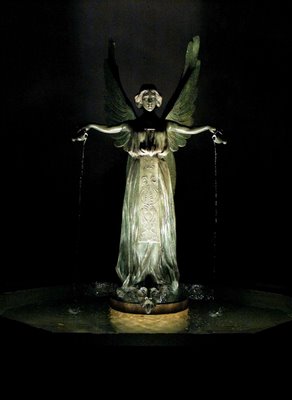
Water flows from ewers in the angel's hands and originally spouted from four dogs' heads at the base.The figure may represent Persephone, queen of the underworld, guarded by the dog Cerberus. Originally the sculpture stood in front of a marble column with overhead basin at the Skinker Avenue entrance to the 1904 Louisiana Purchase Exposition. It was then bought by David N. O'Neil and installed at the entrance to Lindell and Kingshighway Park entrance in 1907, and then moved south of the Field House in 1916. After suffering from vandalism it went into storage until its restoration in 1975 and now finally has found a home at the Missouri Botanical Garden.
Here is a thought experiment: you are hired by Cdl. Mahoney of L.A. to design a Cathedral, his recent one having been completely destroyed by a meteor. You are given carte blanche on the design, and $500 million budget. His only requirement is this: it must not be in a recognizably historical style, be it Gothic, Romanesque, Baroque, etc., but you have unlimited freedom otherwise.Matthew replied:
What do you do?
Mark--expect a sketch and a possible posting in the near future. I'd thought about virtually the same question when I was in LA last.Andrew Cusack posted Matthew's drawings for a new Los Angeles cathedral. Click to see them.
A COLLECTION of sacred artefacts looted by the Romans from the Temple of Jerusalem and long suspected of being hidden in the vaults of the Vatican are actually in the Holy Land, according to a British archaeologist...
He has discovered that it was taken to Carthage, Constantinople and Algeria before being hidden in the Judaean wilderness, beneath the Monastery of Theodosius...
Emperor Vespasian ordered the destruction of the Temple at Jerusalem after a Jewish revolt and Roman forces took about 50 tons of gold, silver and precious art to Rome.
If you could meet and have a deep conversation with any five people on earth, living or dead, from any time period, who would they be?" (Explaining why is optional.) Name five people from each of the following categories:Saints, Those in the Process of Being Canonized, Heroes from your native country, Authors/Writers, celebrities.Saints
During the past few years, scores of impoverished inner-city schools have shuttered their doors. On the surface, that could be a blessing. After all, one of the major problems with American education is that bad schools seem to live forever.Catholic parochial schools have been closing down for the past four decades. Only Catholic private schools—expensive ones, paid for by tuition and not by the weekly dontations in the basket—are flourishing. And unfortunately, the very people that the Church was given a direct mandate to serve—the poor—are probably now worse served in education than in anytime in the past several centuries. In the United States, impoverished Irish and Italians, fleeing famine and persecution, went from being the poorest of all immigrants to the broad middle class in one generation, largely due to the schools which are now closed.
But, alas, I’m not writing about those schools — the persistently failing public schools that, under No Child Left Behind, are supposed to be “restructured” out of existence, or at least subjected to an extreme makeover. No, the ones leaving children standing outside their locked doors are generally places of deep learning, community institutions that have effectively served the children of the poor for generations. They are Catholic parochial schools — and their closure is nothing but a tragedy.
The closures have little to do with the quality of education that these schools provide. Two decades of studies have shown them to be effective, especially for poor and minority children. Rather, broader demographic trends are to blame. Simply put, most Catholics have left the urban core for homes in the leafy suburbs, and urban parishes have dried up in their wake. No parishes, no parish subsidies, no parish schools —yet thousands of needy children remain downtown. On top of that, the schools’ pipeline of affordable teachers has run dry. Once upon a time, most Catholic-school instructors were members of religious orders, requiring little or no cash compensation; now there are more nuns over age 90 than under age 50 in the U.S., and only five percent of the schools’ teachers come from religious orders. Lay teachers must be paid a decent wage, pushing Catholic-school tuitions out of reach for many poor families.My readers are no doubt highly familiar with these problems. But since education is compulsary, that leaves the poor little option but the public schools. A number of years ago, the bipartisan No Child Left Behind Act was supposed to improve public schools via accountability programs. This article states that there is a large loophole in the program, which merely allows failing schools to restructure themselves as an alternative to doing something drastic, such as firing bad teachers or even closing down.
By the early 1800s, pirates and robbers were entrenched on the river's western banks, preying on river traffic. Spanish military units were sent in to wipe them out, but the pirates merely moved to the east side of the river beyond Spanish jurisdiction, Thilenius and Snider related. The pirates set up on Cottonwood Creek and in "Sinner's Harbor'' on the Big Muddy River and resumed their crimes of robbery and murder.There may even be buried pirate treasure here! According to Geologic Wonders and Curiosities of Missouri, by Thomas R. Beveridge, Blackbeard the Pirate may have buried his treasure in Jefferson County, Missouri, located just south of Saint Louis County.
Early in the summer of 1803, before the Louisiana Purchase was consummated, a detachment of U.S. Cavalry was sent to camp at Devil's Bake Oven with orders to stay and end the river piracy. By the end of that summer, the troops had captured or destroyed all the pirates' craft and killed, captured or driven off all the criminals. The area had been made safe for white settlers to move in.
Thanks to the horse, Jesse james and crew thoroughly covered Missouri in a relatively short period of time, but Blackbeard the Pirate chose the hard way to leave his calling card... exceptionally high waters during the rainy season permitted Blackbeard to go up the valley of the Joachim [Creek] and into the area that is now Harrison Lake. Receding water left his pirate vessel stranded in the Harrison Lake area and his loot was buried near the natural bridge south of the present lake. The ship was then rolled on logs for 4 miles overland to be launched in the Mississippi River near Crystal City... The treasure legend has apparently been taken seriously by some and resulted in small-scale digging.


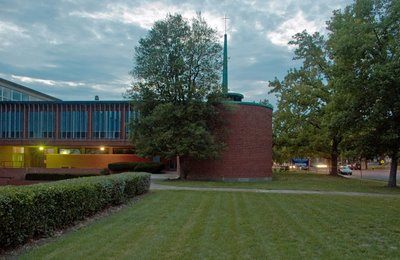
He became the apostolic administrator of the Louisiana Territory in 1812. When he arrived in New Orleans, he found that the rampant vice of the city, coupled with the insubordination of Antonio de Sedella, a popular Spanish Capuchin priest who catered to the whims of the lukewarm local Catholic population, gave him reason to request that a new bishoporic be created for Louisiana. After a trip to France and Rome, and he was named the second bishop of Louisiana and the [East and West] Floridas in 1815. Shortly thereafter, however, he found he could no longer safely reside in New Orleans, and to avoid a schism, he relocated to St. Louis, Missouri in 1817. While in St. Louis, Dubourg founded St. Mary's of the Barrens Seminary, the first college founded west of the Mississippi River. He also helped to bring Rose Philippine Duchesne and her newly created Society of the Sacred Heart to the St. Louis area. In 1823, his last year in St. Louis, he welcomed the arrival of Pierre-Jean De Smet and his fellow Jesuits to the diocese. These same men would later found St. Louis University.Click for his episcopal history.
He then returned to New Orleans, leaving the St. Louis Catholic community greatly expanded, even if in considerable debt. Joseph Rosati became his coadjutor in 1825, and after Dubourg returned to France, Rosati became the first bishop of the new diocese of Saint Louis.
In 1825, Dubourg returned to France, having resigned his seat in New Orleans due to supervisory conflicts with Rosati. In France, DuBourg served as Bishop of Montauban, and was appointed Archbishop of Besançon in February 1833. He died later that same year.



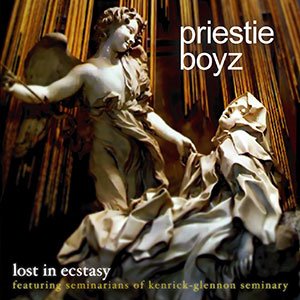 I am happy to announce that the Catholic rock band Priestie Boyz at Kenrick-Glennon Seminary (in St. Louis, MO) has released their CD, Lost in Ecstasy, which is available for purchase on their website (www.priestieboyz.com), and in select locations in St. Louis. You can listen to song previews on the Priestie Boyz' website....
I am happy to announce that the Catholic rock band Priestie Boyz at Kenrick-Glennon Seminary (in St. Louis, MO) has released their CD, Lost in Ecstasy, which is available for purchase on their website (www.priestieboyz.com), and in select locations in St. Louis. You can listen to song previews on the Priestie Boyz' website....Last week's lecture by Pope Benedict XVI that provoked angry protests in the Islamic world has also triggered a cry of protest in the arcane worlds of philosophy and theology.The Holy Father's lecture was primarily an attack on modern philosophy, which attempts to divorce ancient Greek thought from Christianity, a process called 'de-Hellenization'. Christianity has traditionally been intellectually based on the philosophy of Socrates and Plato and their followers. Newer interpretations of Christianity are based on subjective, skeptical philosophies, which tend to doubt even the basic concept of truth.
Benedict's thesis about the relationship between faith and reason has its foundation in ancient Greek philosophy.However, modern philosophies do not add anything to philosophy, but only subtracts from the intellectual framework of the ancients. What has been lost? Perhaps we need to look at the current state of society to answer that question.
However, a sizable number of Catholic and Protestant theologians argue that this so-called neo-Platonic perspective is inadequate for 21st century theology.
'The encounter between the Biblical message and Greek thought did not happen by chance,' said Benedict, who contends that Christianity reflects much of the thought of the pre-Christian Greek philosopher Plato.
By quoting emperor Manuel II, Benedict was criticising a modern view of God as radically free, an utter mystery who cannot be known through human reason. In that view, God and reason are things independent of one another.The right-wing version of this modern view is Fundamentalism, while the left-wing version is Liberalism. It is ironic that these two systems of belief, which are always attacking each other, are based on the same theological reasoning. In both, religion and reason are separated, and this leads to chaotic action by their followers.
Thomas Proepper, who teaches Catholic dogmatic theology at the University of Muenster in Germany, is one of many who argues that Kant, not Plato, is closer to Christian views, and would offer a better basis for a dialogue between philosophy and theology.Except that for more than 1400 years, Plato and Christianity had been inseparable. His argument that Kant offers a better basis for dialogue is flawed: it would be equivalent to us having to embrace Communism so that we can better dialogue with North Korea.
Benedict's Catholic critics retort that such a dialogue is impossible with those, including western atheists, who do not accept the neo-Platonic understanding of divine reason.Socrates did not argue with the Sophists using their own philosophy; rather he questioned their philosophy as a part of the dialogue. Likewise, modern agnostic reasoning has to be questioned, and not merely assumed, as these critics seem to want.
Striet said, 'I think it is better to rely on the sort of reason that Christian and agnostic people share with one another.'
At the close of the Enlightenment period there stands the austere and unbending figure of Kant, and Kant presents us with a perfect example of what happens to Christianity when we begin to discount the Bible and the Creeds. We are left with a moral religion that leaves room for God but does not leave room for much else in the way of religion....His philosophy is based on the idea that the human intellect is simply incapable of grasping ultimate, transcendent reality, so instead of trying to see beyond the mere appearances of our experience, he says that we should give up before we even start. Reason, he thinks, should be strictly limited to nature and experience, and must avoid all speculation. This is a solid, but also stultifying foundation for thought, that automatically limits inquiry. However, unlike most sciences, modern theoretical physics does not follow the philosophy of Kant, and has made tremendous progress.
Kant is the philosopher, par excellence, of human freedom and human rights, and he teaches the unconditioned obligation to treat others as possessing absolute value as members of a "kingdom of ends" Yet he ends up by condemning prayer, sacraments, and the Church...[as] actually pernicious....
The church is invisible because it is the union of free moral agents, and their ethical commonwealth has no essential relationship to either the state or other members...This is troublesome because even an oppressive state-controlled church would "still be free", and of course this model of church would otherwise lead to endless protestant-style division and conflict.
Yet there is nothing important or necessary about the relation of this religion with anything historical. The historical elements in any religion may be necessary for a time, and in certain places, as a means to teach the fundamental truths of all religion, but this is to say they have value only as means, and not in themselves.This leads eventually to the dismembering of religion. Liberal religions, for example, be they Jewish, Catholic, New Age, or Protestant, have chapels and politics that often seem to be indistinguishable from each other.
 Here is a cross made by Nicario Jiménez, "The Artist of the Andes"; found at the Saint Louis Art Fair on September 8th, 2006.
Here is a cross made by Nicario Jiménez, "The Artist of the Andes"; found at the Saint Louis Art Fair on September 8th, 2006.The three-year bicentennial of the explorers' expedition returns to the region this week for a final round of ceremonies and a symposium; concerts and keelboats. The St. Louis riverfront will host the largest event on Saturday where "Clarkies" - American history's version of "trekkies" - can feast on all things Lewis and Clark: the tools they used, the plants they collected, the land they surveyed.This is a surprisingly dismissive article, though. Perhaps this is due to the modern interpretation of this expedition.
Other attractions include the arrival of the re-enactors, the Show-Me Missouri Fish Mobile Aquarium, concerts from Indian artists Martha Redbone and Indigenous, fireworks and an array of fair food, including buffalo meat. Sounds like a fun festival, but don't call it that.
"Certainly it's entertainment, but the point to be made is the persistence of Indian culture and an appreciation for how that culture relates to the contemporary world," said Robert Archibald, president of the Missouri Historical Society and president of the National Council of the Lewis and Clark Bicentennial, the nonprofit organization that helped stage events along the trail.

The 14th Century Christian emperor's quote said the Prophet Muhammad brought the world only evil and inhuman things.Since the BBC has taken this quote out of context, it appears worse than what the Pope actually said. Here is the original quote:
...he addresses his interlocutor with a startling brusqueness on the central question about the relationship between religion and violence in general, saying: "Show me just what Mohammed brought that was new, and there you will find things only evil and inhuman, such as his command to spread by the sword the faith he preached". The emperor, after having expressed himself so forcefully, goes on to explain in detail the reasons why spreading the faith through violence is something unreasonable.Here is the BBC's story in Arabic: البابا يأسف لردود الفعل الغاضبة; I'd like to know what it says!
The pontiff did not endorse that description, but he did not question it, and his words set off a firestorm of protests across the Muslim world.but the Post did not question the reasonability of spreading religion through violence. The New York Times also fans the flames of violence:
...the speech, in which Benedict quoted a 14th-century Byzantine emperor as calling Islam “evil and inhuman.”Pope Benedict did issue an apology (see Text of Pope's apology)
At this time, I wish also to add that I am deeply sorry [Italian: vivamente rammaricato = greatly distressed] for the reactions in some countries to a few passages of my address at the University of Regensburg, which were considered offensive to the sensibility of Muslims.Note that Pope Benedict did not apologize for what he said, but was sorry about the reaction to what he said. The Pope is not a career politician, but instead was a college professor for the first part of his career, and was lecturing as a scholar. He was lecturing on the relationship between faith and reason, with clear, well-defined arguments, and so has nothing to apologize about. The whole point of his lecture was on the need for reason and honest dialogue.




Most great buildings have one or two good new ideas at their heart, supported by a framework of the tried and true which has been tweaked and tuned and subtly shifted to accomodate this single shining stroke of genius. Often they're very good ideas--but never before has it been demanded that the architect dream up every single good idea he puts into a building, in a spirit of false originality, which boils down to a frantic, bare and often featureless novelty.
The little creature, born five years ago, stands a mere 17 1/2 inches tall at the withers, roughly the stature of a medium-size dog, and weighs about 60 pounds...Goose Creek Farm is 12 highway miles west of downtown Saint Louis, Missouri, in the otherwise-residential suburb of Ladue.
From certain angles, at a glance, Thumbelina could be a tiny buffalo. From others, a potbellied pig....
I was reminded of all this recently, when I read the edition by professor Theodore Khoury (Muenster) of part of the dialogue carried on — perhaps in 1391 in the winter barracks near Ankara — by the erudite Byzantine emperor Manuel II Paleologus and an educated Persian on the subject of Christianity and Islam, and the truth of both....This somewhat lengthy part of his speech is not his main point, for it is not about Islam, but is instead about the relationship between Reason and Faith.
In the seventh conversation ("diálesis" — controversy) edited by professor Khoury, the emperor touches on the theme of the jihad (holy war). The emperor must have known that sura 2:256 reads: "There is no compulsion in religion." It is one of the suras of the early period, when Mohammed was still powerless and under [threat]. But naturally the emperor also knew the instructions, developed later and recorded in the Koran, concerning holy war...
[H]e turns to his interlocutor somewhat brusquely with the central question on the relationship between religion and violence in general, in these words: "Show me just what Mohammed brought that was new, and there you will find things only evil and inhuman, such as his command to spread by the sword the faith he preached."
...
The decisive statement in this argument against violent conversion is this: Not to act in accordance with reason is contrary to God's nature....
I believe that here we can see the profound harmony between what is Greek in the best sense of the word and the biblical understanding of faith in God. Modifying the first verse of the Book of Genesis, John began the prologue of his Gospel with the words: "In the beginning was the 'logos.'"'Logos' was used by Greek philosophers to refer to the Supreme Being (which, by the way, is another term from Plato). John decisively said that the God of the Greek philosophers is the God of the Jews.
This is the very word used by the emperor: God acts with logos. Logos means both reason and word — a reason which is creative and capable of self-communication, precisely as reason. John thus spoke the final word on the biblical concept of God, and in this word all the often toilsome and tortuous threads of biblical faith find their culmination and synthesis. In the beginning was the logos, and the logos is God, says the Evangelist. The encounter between the biblical message and Greek thought did not happen by chance.
Today we know that the Greek translation of the Old Testament produced at Alexandria — the Septuagint — is more than a simple (and in that sense perhaps less than satisfactory) translation of the Hebrew text: It is an independent textual witness and a distinct and important step in the history of Revelation, one which brought about this encounter in a way that was decisive for the birth and spread of Christianity.By the way, New Testament writers only quoted the Septuagint texts. The use of the Septuagint explains why the names of the books in older Catholic bibles are often different than what is used in Protestant bibles (like Paralipomenon), and also why it has additional books.
The thesis that the critically purified Greek heritage forms an integral part of Christian faith has been countered by the call for a de-Hellenization of Christianity — a call which has more and more dominated theological discussions since the beginning of the modern age. Viewed more closely, three stages can be observed in the program of de-Hellenization:Although, as we see in John and the Wisdom literature, Greek philosophy is assumed.
De-Hellenization first emerges in connection with the fundamental postulates of the Reformation in the 16th century... The principle of "sola scriptura"... sought faith in its pure, primordial form, as originally found in the biblical Word.
The liberal theology of the 19th and 20th centuries ushered in a second stage in the process of de-Hellenization... this program was highly influential in Catholic theology too. It took as its point of departure Pascal's distinction between the God of the philosophers and the God of Abraham, Isaac and Jacob... [The] central idea was to return simply to the man Jesus and to his simple message, underneath the accretions of theology and indeed of Hellenization... The fundamental goal was to bring Christianity back into harmony with modern reason, liberating it, that is to say, from seemingly philosophical and theological elements, such as faith in Christ's divinity and the triune God....Pope Benedict then goes on to describe the modern, restricted definition of science: it assumes the Platonic view of mathematics, that it is objectively true, but it limits reason to purely empirical matters. This strongly limits modern science (although the hard sciences, being more based on mathematics, often do not limit themselves to empiricism). Too many questions are now considered "unscientific". This new definition of science ends up
reducing Christianity to a mere fragment of its former self. But we must say more: It is man himself who ends up being reduced, for the specifically human questions about our origin and destiny, the questions raised by religion and ethics, then have no place within the purview of collective reason as defined by "science" and must thus be relegated to the realm of the subjective.Does this seem familiar?
The subject then decides, on the basis of his experiences, what he considers tenable in matters of religion, and the subjective "conscience" becomes the sole arbiter of what is ethical. In this way, though, ethics and religion lose their power to create a community and become a completely personal matter. This is a dangerous state of affairs for humanity, as we see from the disturbing pathologies of religion and reason which necessarily erupt when reason is so reduced that questions of religion and ethics no longer concern it. Attempts to construct an ethic from the rules of evolution or from psychology and sociology, end up being simply inadequate....The New Testament itself is now edited, with anything sounding Greek being discarded. This has led to abominations such as Marxist Christianity, New-Age Christianity, etc. But:
...I must briefly refer to the third stage of de-Hellenization, which is now in progress. In the light of our experience with cultural pluralism, it is often said nowadays that the synthesis with Hellenism achieved in the early Church was a preliminary inculturation which ought not to be binding on other cultures.
The latter are said to have the right to return to the simple message of the New Testament prior to that inculturation, in order to inculturate it anew in their own particular milieux.
This thesis is not only false; it is coarse and lacking in precision. The New Testament was written in Greek and bears the imprint of the Greek spirit, which had already come to maturity as the Old Testament developed.Benedict states that he does not wish to discard the fruits of modern science, but instead regain the broader meaning of reason that was present in ancient Greek philosophy.
The intention here is not one of retrenchment or negative criticism, but of broadening our concept of reason and its application.Puting multiculturalism first leads to the paradox of being unable to converse with other cultures:
Only thus do we become capable of that genuine dialogue of cultures and religions so urgently needed today... A reason which is deaf to the divine and which relegates religion into the realm of subcultures is incapable of entering into the dialogue of cultures.A return to Greek philosophy can also help modern science:
...modern scientific reason with its intrinsically Platonic element bears within itself a question which points beyond itself and beyond the possibilities of its methodology. Modern scientific reason quite simply has to accept the rational structure of matter and the correspondence between our spirit and the prevailing rational structures of nature as a given, on which its methodology has to be based.Returning to the whole breadth of reason, in all of its grandeur, opens up vast horizons.


"The U.S. Department of Education awarded the St. Louis Public School District nearly $6 million in new grant money for the 2006-2007 school year, the district said Friday."74% of the money is for the Early Reading First program.